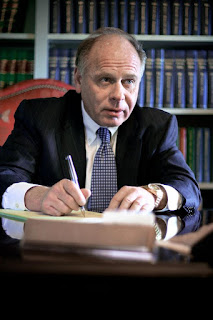biology tutor
The occasional table shows the concoction components in
lines and segment shrewd. There are 7 lines and 18 sections in the total table
and the components are orchestrated in the expanding nuclear number beginning
from Hydrogen whose nuclear number is equivalent to 1. Periodic Table
The historical backdrop of the occasional table is dated in
the year 1869 and was established by Dmitri Mendeleev. He found 65 components,
which could be organized in a table or matrix structure dependent on their
nuclear weight. The 65 components were then orchestrated in line and section
organization and in this manner lead to the development of the principal table.
The dad of occasional table believed this to be the core of science and
simultaneously understood that there exist numerous obscure components that
could fill in the holes in the table. He at that point found components like
silicon, gallium and scandium on paper.
In spite of the fact that Mendeleev brought forth the
occasional table, the right clarification of the components and their standard
example was found by Henry Moseley in the year 1913, 44 years after the primary
table. As indicated by Moseley, components vary from each other as a result of
the distinctive number of protons. He further found that the components
position in the table can be better anticipated by their nuclear number and not
their nuclear weight. The cutting edge table presently incorporates 108 or 109
components. In the cutting edge table the vertical sections are called as
gatherings and by and by there are 18 gatherings. Every one of the components
in a gathering have comparative attributes, substance and physical properties
in light of a similar number of electrons present in them. The level lines in
the cutting edge table are called as Period. Every component straight contrasts
from another in its synthetic properties. This adjustment in property is
watched on the grounds that the quantity of protons or electrons increments
from left to directly over a time of column.
In the cutting edge intermittent table the periods differ
long. For example the main time frame is of the briefest length and contains
just two components, Hydrogen and Helium, the following two time frames contain
8 components every, periods four and five have 18 components. The components in
the table are likewise characterized dependent on their attributes like the
Group I are known as the Alkali Metals, Group II as the Alkaline Earth Metals,
Transition metals (some of the time additionally called as overwhelming metals,
in light of the fact that their densities are more noteworthy than the Group IA
and Group IIA metals), Rear Earth Metals...etc.
Further research is proceeding to discover more components
from numerous groups of the table. Researcher are continually looking for data
about the presence of these components and investigate the different shrouded
speculations of science.
Bharath Patel and Dilip Semwal are proficient iPhone
application designers who moved on from college of leicester(UK). With great
measure of research on Periodic Table, have built up an iPhone application
which isn't useful for understudies yet additionally to educators, which is
accessible at.Visit This Website=http://teachscience.sg/
Article Source: https://EzineArticles.com/master/Bharath_Patel/1295955
Article Source: http://EzineArticles.com/6950471


Comments
Post a Comment